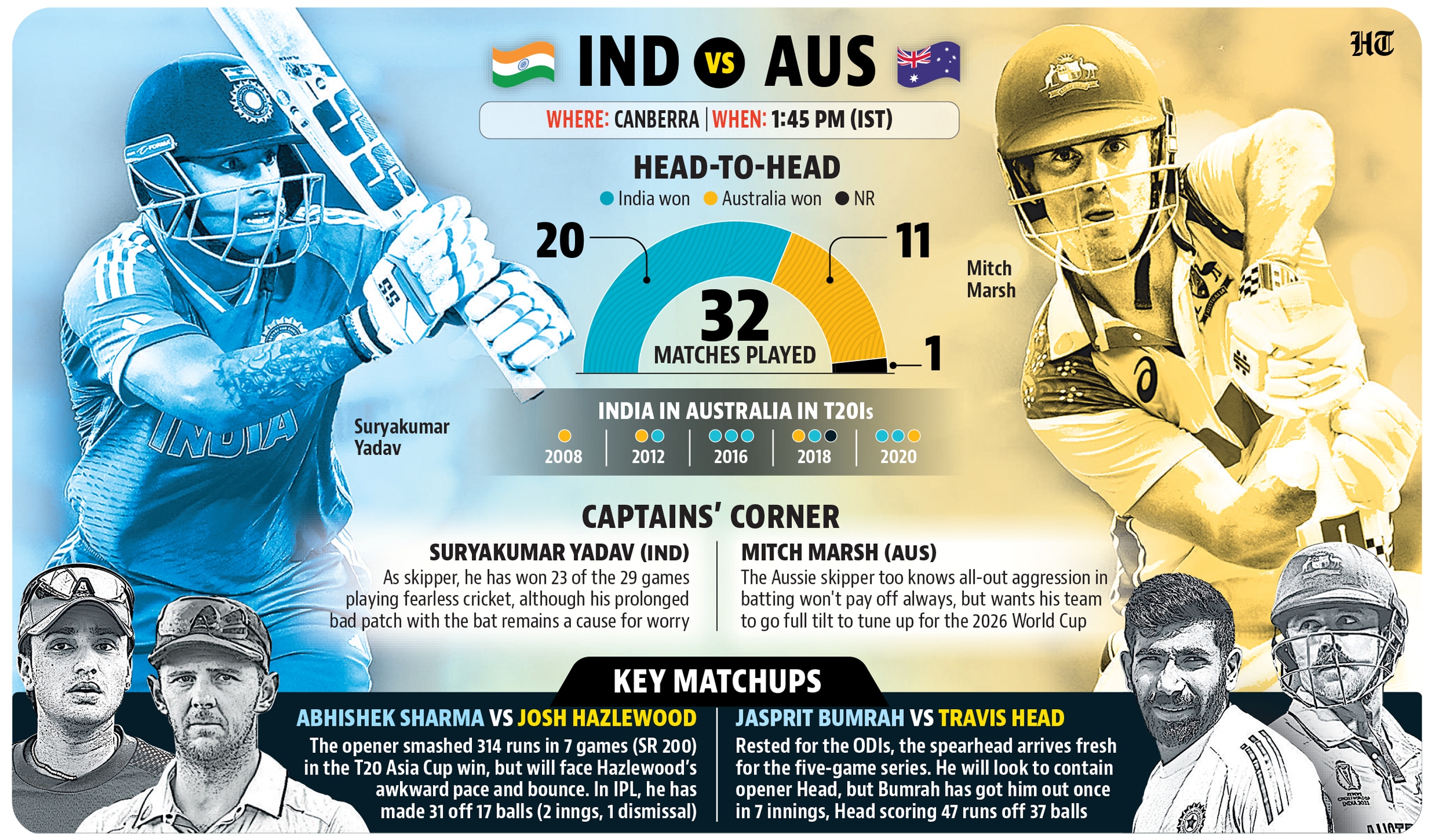Kolkata: The recent spate of one-sided results validates the theory that India-Pakistan isn’t a top rivalry anymore. England have come up several notches but even they were comprehensively beaten at home earlier this year.

With Australia however, a rivalry has slowly evolved that tends to keep you on the edge of your seat, home or away. In Tests definitely, but also in T20 purely because of the brevity of the format and the unpredictability it entails. Which is why the five-match series, beginning in Canberra on Wednesday, is poised to be a powerplay to the T20 World Cup a few months down the line.
India are No.1, Australia No.3. This series is in Australia, while India will defend their T20 World Cup at home. But the difference in conditions won’t matter as much as the way they play their cricket, which has been remarkably similar in recent years that even the most astute analysts would be prone to calling this series too close to call. Central to this is how India and Australia have pushed the boundaries of batting despite losing a few batting stars.
The retirements of Rohit Sharma, Virat Kohli, and Ravindra Jadeja have only further emboldened India. They have brought in Abhishek Sharma and Shubman Gill as the fire and ice openers, backing it with batting depth where even skipper Suryakumar Yadav can come in at No 9.
In the last year alone, they have breached the 200-run mark four times, once going up to 283, underlining India’s desire to keep playing fearless cricket irrespective of the circumstances. Quick wickets don’t jolt them anymore, a case in point being the Asia Cup final where India rode on a 53-ball 69 not out from Tilak Varma after being reduced to 20/3. Suryakumar is hoping India will pick up from where they had left barely a month ago.
“Preparation obviously started with the Asia Cup and it will continue like this,” said Surya on Monday. “We are not looking like we have come to a foreign country to play so we will look at this series in a different way. It’s a build-up to the World Cup, but at the same time it’s quite challenging as well, so I am sure it will be a good one.”
Jasprit Bumrah returns after being rested for the ODI series, but India have to rebalance the bowling a bit more from the spin-heavy attack used to win the Asia Cup. “It’s a good headache to have, so many options, fast bowlers and spinners,” he said. “From the top to No.7, everyone is flexible, anyone can bat anywhere. It is a little difficult during squad selection, but in this team the atmosphere is such that everyone knows that the goal is to win.”
Australia too have been on a similar roadmap after their poor show in the 2022 and 2024 World Cups, moving on from the batting core of David Warner, Steven Smith and Matthew Wade and recalibrating their scoring pattern under Mitchell Marsh, on the lines of England.
Travis Head has been the bedrock of this approach, with Josh Inglis, Marcus Stoinis, Tim David, Mitchell Owen and Glenn Maxwell providing the muscle that has helped them win 16 out of 19 games since the defeat to India stopped them short of qualifying for the 2024 T20 World Cup semi-final.
“When we set out on this journey, we’d failed in a couple of World Cups previously. So, we wanted to shift and stretch the boundaries on what we thought we could do,” said Australia coach Andrew McDonald. “So yeah, we have been more aggressive, we’ve played people in different positions. Is it the style that can win a World Cup? We believe so.”
Beyond the rankings, what makes these two teams look even more formidable is their win percentage — 81% for India and 84% for Australia — since the last World Cup. In the run-up to the next edition, it’s only fair India put their flair to test against an Australian team that refuses to buckle under pressure.
“You’re playing against India, so it’s a really good test on whether this style will hold up,” said McDonald. “They’re the No.1 ranked team in the world, I think we’re No.2 (Aussies are No.3). We’re excited to test ourselves against the best.”








